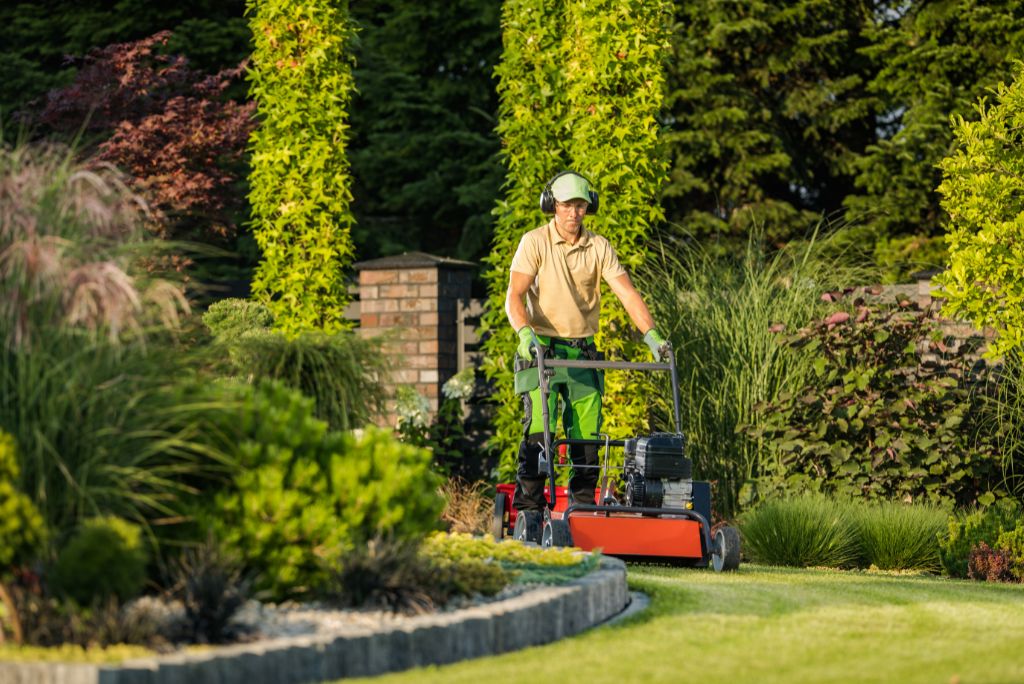Commercial Lawn Mowing

Best Commercial Lawn Mowing in Texas – My Neighbor Services
In the realm of lawn care, mowing might seem like a straightforward task. However, there’s more to it than just pushing a lawnmower across your turf. Commercial lawn mowing requires finesse, knowledge, and precision to ensure that your grass stays healthy and vibrant. In this guide, we’ll delve into the nuances of mowing grass properly to maintain lush, green lawns.
The Proper Way to Mow Grass: A Guide to Commercial Lawn Mowing
Understanding Grass Height
Why Height Matters
Maintaining the appropriate height when mowing your lawn is crucial for its overall health. Cutting grass too short can lead to damage to the crown, promoting weed growth and hindering grass vitality.
Grass Varieties and Cutting Heights
Different grass species have distinct height requirements. Understanding these variations is essential for optimal lawn care. Here are recommended cutting heights for popular grass types, essential for commercial lawn mowing:
Bentgrass: 1/4 to 1 inch
Bermuda grass: 3/4 to 1 1/2 inches
Zoysia grass: 1 to 2 inches
Centipede grass: 1 to 2 inches
Kentucky bluegrass: 1 3/4 to 2 1/2 inches
Tall Fescue: 2 to 3 inches
Ryegrass: 1 1/2 to 2 inches
St. Augustine grass: Up to 2 1/2 inches
Mowing Techniques and Patterns
Diversify Your Approach
Repeatedly mowing your lawn in the same pattern can cause grass blades to bend in one direction, leading to unsightly bald patches. Varying your mowing pattern promotes upright growth and maintains a uniform appearance.
Pattern Choices
The ideal mowing pattern depends on your aesthetic preferences. For a classic striped look, alternate mowing directions horizontally or vertically across the lawn. Alternatively, create a visually striking spiral pattern by starting from the center and gradually working outward.
Pricing Strategies for Commercial Lawn Mowing
Estimating Job Duration
Accurately assessing the time required for a mowing job is fundamental to setting fair prices. While lot size might provide a rough estimate, factors such as lawn complexity and terrain must also be considered.
Hourly Rate Calculation
Determining an appropriate hourly rate involves factoring in various costs:
- Labor: Account for employee wages and your own hourly rate.
- Equipment: Include fees to cover equipment purchase, maintenance, and repairs.
- Overhead Costs: Consider expenses for administrative support, vehicle upkeep, and marketing efforts.
Conclusion
Proper lawn mowing is a cornerstone of commercial lawn mowing landscaping, ensuring vibrant, healthy lawns that enhance curb appeal. By adhering to correct cutting heights, employing diverse mowing techniques, and implementing strategic pricing, lawn care professionals can deliver exceptional service while maximizing profitability. Remember, a well-maintained lawn not only improves the aesthetic appeal of a property but also contributes to environmental sustainability and client satisfaction. With attention to detail and a commitment to excellence, commercial lawn mowing businesses can establish themselves as industry leaders, attracting loyal clientele and fostering long-term success.
Frequently Asked Questions
Q. How often should I mow my commercial lawn?
A. Mowing frequency depends on factors like grass growth rate and seasonal variations. Generally, weekly mowing during peak growing seasons suffices.
Q. Is it necessary to sharpen mower blades regularly?
A. Yes, sharp blades result in cleaner cuts, reducing stress on grass and promoting faster recovery. Aim to sharpen blades at least once a season or more frequently if needed.
Q. Can I mow wet grass?
A. It’s best to avoid mowing wet grass as it can lead to uneven cuts and clumping. Wait until the grass is dry to achieve optimal results.
Q. What is the significance of grass clippings?
A. Leaving grass clippings on the lawn after mowing can provide natural nutrients, promoting soil health and reducing the need for fertilizers.
Q. How can I prevent lawn mower tracks on my grass??
A. Varying mowing patterns and using lightweight equipment can minimize the appearance of mower tracks, preserving the lawn’s aesthetic appeal.
